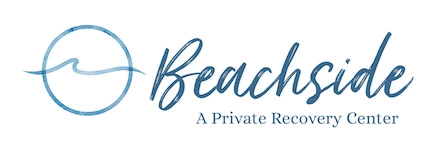
George was recently diagnosed with a dual diagnosis. He checked himself into a treatment center for alcoholics and was surprised when the therapist told him that he has a dual diagnosis of alcohol abuse and anxiety. At first, George was confused, but as he talked more to his therapist, he started to see the pattern.
After years of trying to cope with the undiagnosed anxiety, George turned to alcohol to relax so he could sleep. That then turned into a drink after a rough work day so he could manage his stress. As his anxiety increased over the loss of his dad, George started drinking throughout the day to deal with the pressures of funeral costs, work, and finding adequate care for his now-widowed mother.
If this sounds like you or someone you know, dual diagnosis may be something to discuss with your therapist. What is dual diagnosis? How can you create a recovery roadmap to break the cycle of addiction? Here at Beachside Rehab, we want to help you answer those questions. Read on for more information and how you can get the help you or your loved one need.
What is Dual Diagnosis?
According to the National Alliance on Mental Illness (NAMI), dual diagnosis, also known as co-occurring disorders (COD), “is a term for when someone experiences a mental illness and a substance use disorder simultaneously.” Either one can occur first and often lends itself to the other disorder.
For instance, a patient with an undiagnosed anxiety disorder may turn to alcohol to cope with the stress of work and inability to sleep because of their anxiousness. A single drink used to help the patient sleep can snowball into a dependency to get through the day. The substance abuse then further exaggerates the anxiety, creating a circle of dependency.

However, sometimes a mental disorder is present due to the substance abuse. “In early sobriety, it is challenging to differentiate between what is an authentic mental health diagnosis and how much of a patient’s mental health diagnosis is presenting due to their substance use,” says Beachside Rehab’s Clinical Director, Tabitha Grant. “Using drugs and alcohol can mask and even mimic the symptoms of mental health.”
Often, a clinician will provide a preliminary dual diagnosis treatment plan and wait until the patient is sober for a period. If the mental health disorder is still presenting itself after sobriety treatment, the clinician will then officially diagnose the patient.
Why Dual Diagnosis?

Patients diagnosed with COD often have a complicated case, causing the need for more intensive treatment. “With a substance abuse disorder, it’s imperative to treat the co-occurring disorder simultaneously, because they are happening simultaneously,” says Grant. “The disorders also overlap so much that you could be missing an element into a patient’s addiction if you did not also treat their co-occurring diagnosis.”
Dual diagnosis also has the benefit of allowing the patient to get treated for both the substance use disorder and the mental health disorder without disrupting their family or work life for too long. Patients who undergo treatment for dual diagnosis also have a higher chance of sustained sobriety and overall recovery.
How is Dual Diagnosis Treated?

Treatment will largely depend on individual needs. Every patient is given a pre-assessment at intake, which is developed to determine a patient’s situation. “I read every assessment, along with all of the communication the patient has had with the admission staff, and any family reports,” says Grant. “I then meet each patient face-to-face and provide a preliminary diagnosis.”
Grant and the primary therapist develop a treatment plan based on the initial diagnosis. The patient will then be seen by a Beachside Rehab psychiatrist, in which the diagnosis may change or have an additional diagnosis added.
The treatment plan will then be developed and will largely depend on the COD diagnoses. For example, one of the most common dual diagnosis is opiate use disorder combined with anxiety disorder. The objective of this dual diagnosis would be to decrease anxiety while abstaining from substances.

A timeline may be created to determine the start of opiate abuse with the anxiety symptoms. Seeing when the opiate use overlapped with decreased anxiety allows for the patient to move forward in addressing underlying issues.
We recommend evidence-based therapy for all substance abuse treatments. Cognitive behavioral therapy and motivational interviewing are two of the most common therapy treatments for substance abuse. By combining the two therapies, the patient can address their shame and guilt, while working to resolve any false perceptions of the world.
Patients with dual diagnosis should stay in treatment as long as possible. Beachside recommends two to three months to progress through the detox and levels of care in inpatient treatment due to the complicated nature of COD. The patient can then step down into outpatient therapy for the next several months, with treatment decreasing from up to five sessions a week to once a month.
How to Get Help
Beachside Rehab provides not only a holistic luxury rehab but also a full Medical Detox Facility. This means that you can detox and then transition into treatment for rehabilitation of your co-occurring disorders. If you or a loved one are ready to get help, contact us today.
